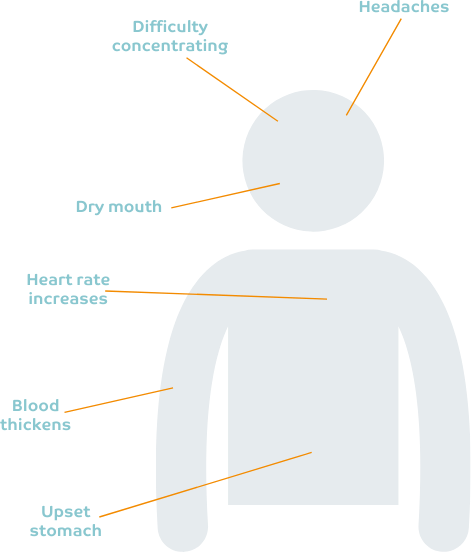With the stress of routine change, dealing with life changes and juggling responsibilities, many of us will find ourselves worrying more than usual at the moment.
It’s important to distinguish between worrying and thinking about something. When we think about something, we’re problem solving. Our thoughts are constructive, centred around managing the present situation and moving forward.
Worrying tends to be focused on the future, focused on what might happen. Rather than being solution focused, you tend to keep thinking about a problem without coming to any conclusions or solutions.

We tend to think about worry as a mental state, but it has a huge impact on us physically too.
When we fret, it puts our body into fight or flight mode. This mode is designed for when we face extreme threatening situations.
As a result, the body shuts down non-priority systems, such as digestion and reproduction, whilst we deal with the threat.
Other processes are dialled up: your heart beats faster to get oxygen to major muscles; your blood thickens to better protect you if you’re injured.
When we’re really stressed we may get physical symptoms such as headaches, dry mouth, racing heartbeat and difficulty concentrating.
Whilst this isn’t harmful in a short-term, acute situation, if we get stuck in a loop with our fight or flight instinct constantly turned on then it takes its toll on those systems.
Our worry mindset
If worrying has become a common habit for you, take some time to think about your attitude towards this thinking style. Some people have negative beliefs about worry and others have learnt to see worry as a positive.
Those who see it as negative often find themselves worrying about how much they worry. This raises anxiety levels even more, creating a vicious cycle.
Others have started to condition themselves to see this stress as a positive – as a way of avoiding bad things happening or feeling prepared for all situations. People in this category almost see fretting as an important responsibility that protects them.
Whether you see ruminating as negative or positive, it’s important to reflect on how you see stress and how that might be contributing to your personal worry cycle.
Take a look at our article on the different types of worry to learn more about your worry style and how to identify it.